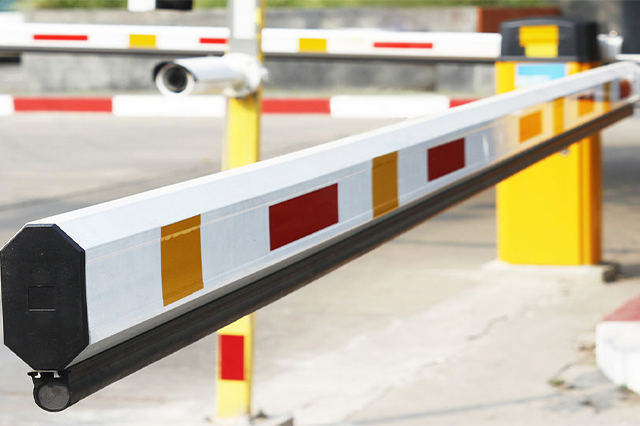Table of Contents
ToggleBoom Barrier
Boom Barrier
A boom barrier, also known as a boom gate or barrier gate, is a bar or pole that can be raised or lowered to control access to a particular area. These barriers are commonly used in various settings, including parking lots, toll booths, industrial facilities, and checkpoints. The primary purpose of a boom barrier is to regulate the flow of traffic and restrict entry to authorized personnel or vehicles. Here are some key features and aspects of boom barriers:

Physical Barrier : Boom barriers consist of a horizontal bar or arm that can be raised and lowered. The bar is typically made of strong and durable materials such as aluminum or steel to provide a physical barrier.
Automatic and Manual Operation : Boom barriers can be operated manually, where a security personnel or gatekeeper raises and lowers the barrier, or they can be automated with motorized systems. Automated boom barriers are often integrated with access control systems and can be operated using remote controls, key cards, RFID tags, or other access control methods.
Access Control Integration : Many boom barriers are integrated with access control systems to manage and control entry and exit points. This integration enhances security by ensuring that only authorized individuals or vehicles can pass through.
Traffic Management : Boom barriers are commonly used for traffic management, especially in areas with controlled access. They help in organizing the flow of vehicles, preventing unauthorized entry, and ensuring a systematic approach to vehicle movement.
Security and Safety Features : Boom barriers often come with security and safety features such as sensors to detect obstructions, emergency manual release mechanisms, and safety loops to prevent the barrier from closing on a vehicle or person.
Speed and Operation Time : The speed at which a boom barrier raises and lowers can be an important factor in certain applications. Some barriers are designed for rapid operation to minimize delays in traffic flow.
Visibility and Signage : Boom barriers are often designed with high visibility to alert approaching vehicles. They may also be equipped with reflective materials and integrated lighting. Additionally, signage is commonly used to convey information about access rules and procedures.
Weather Resistance : Boom barriers are exposed to the outdoor environment, so they are often designed to be weather-resistant and durable. This includes protection against rain, sunlight, and other environmental factors.
Maintenance and Reliability : Regular maintenance is important to ensure the reliable operation of boom barriers. Automated systems may require periodic checks and servicing to prevent malfunctions.
Integration with Other Systems : Boom barriers can be integrated with other security and management systems, such as surveillance cameras, license plate recognition systems, and intercoms, to enhance overall site security and monitoring.
Boom barriers play a crucial role in enhancing security, managing traffic, and controlling access to specific areas. Their versatility makes them valuable in a variety of applications where controlled entry and exit are essential.
